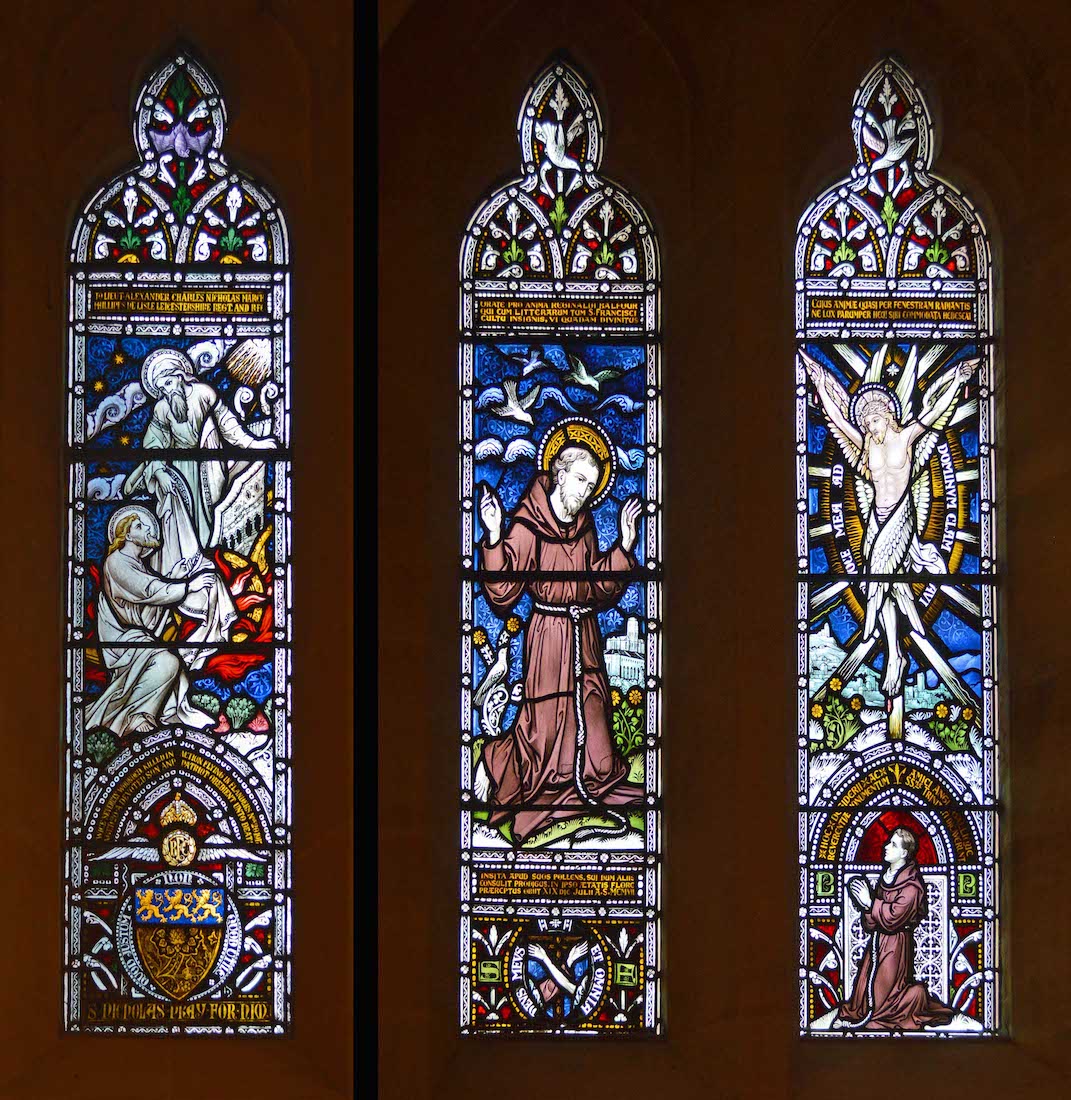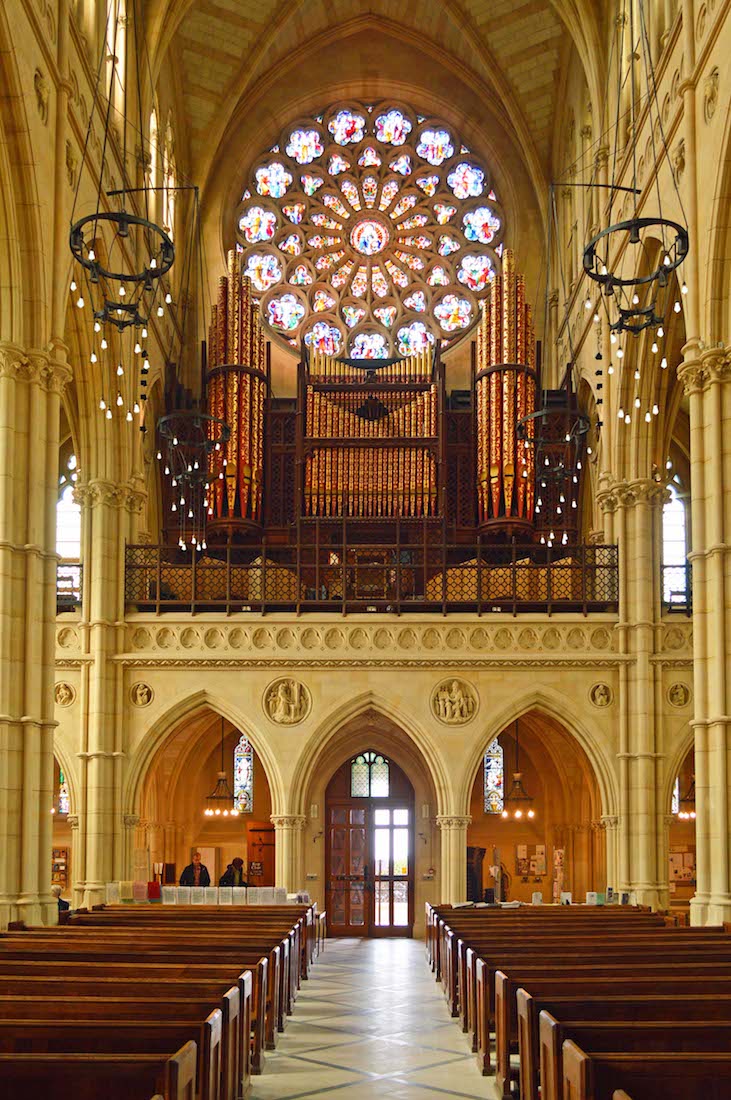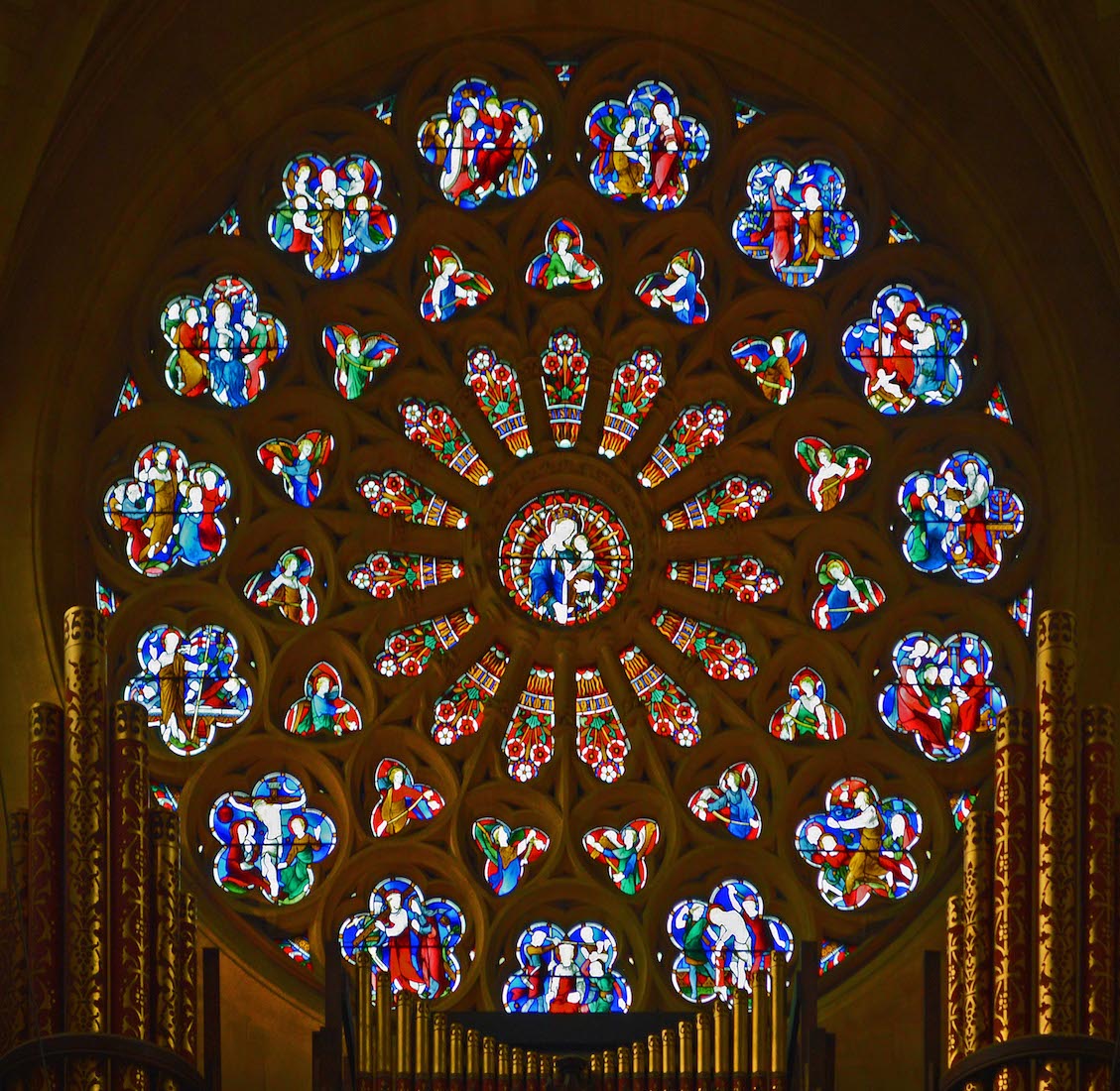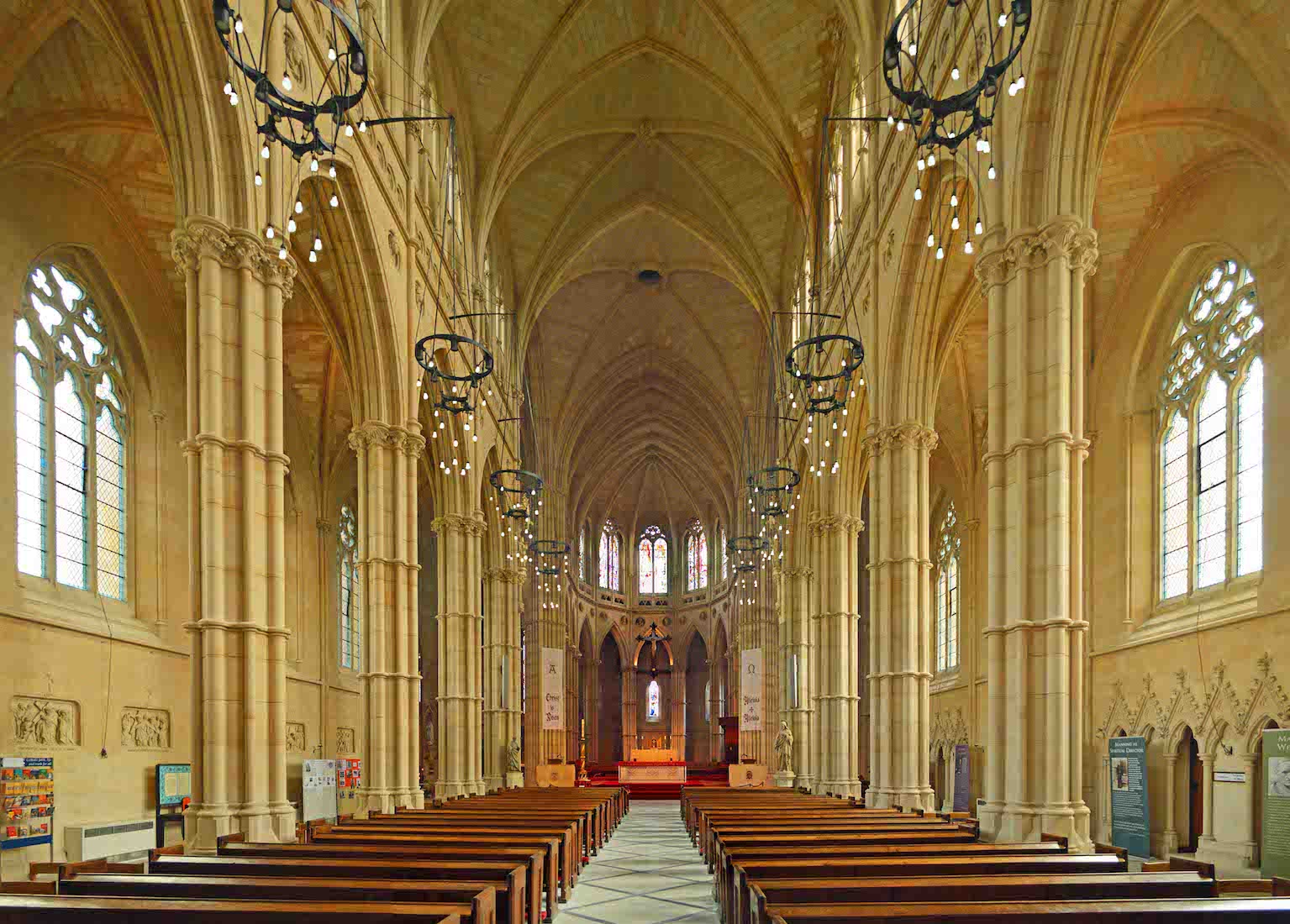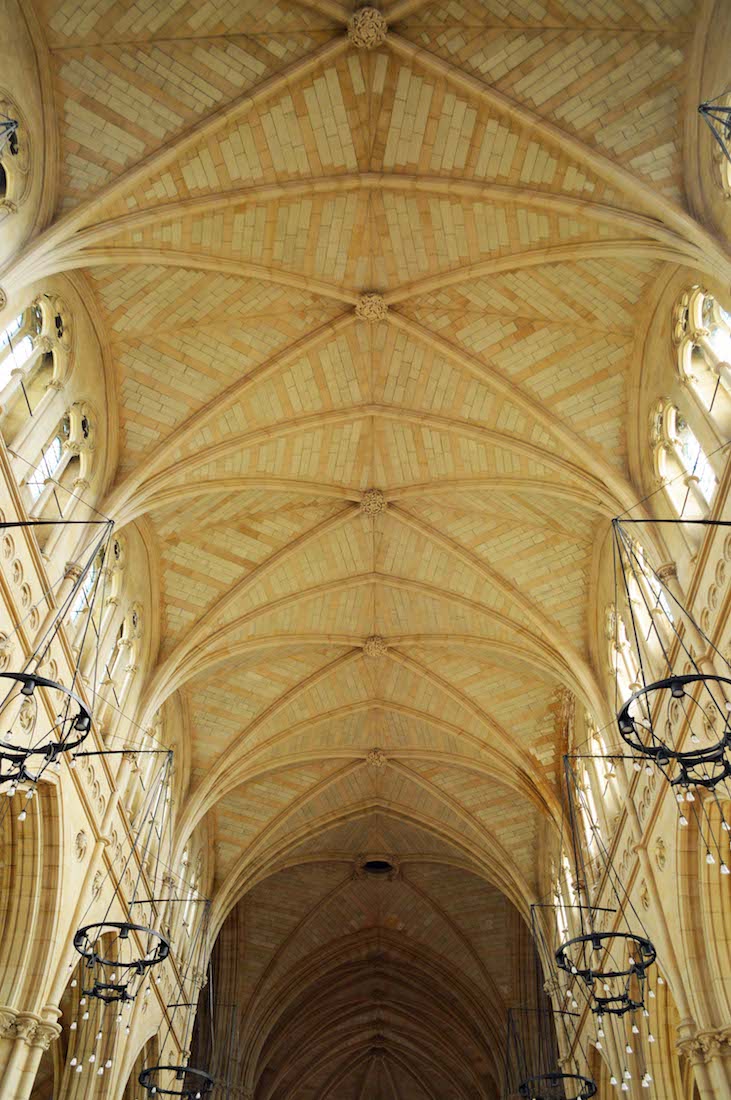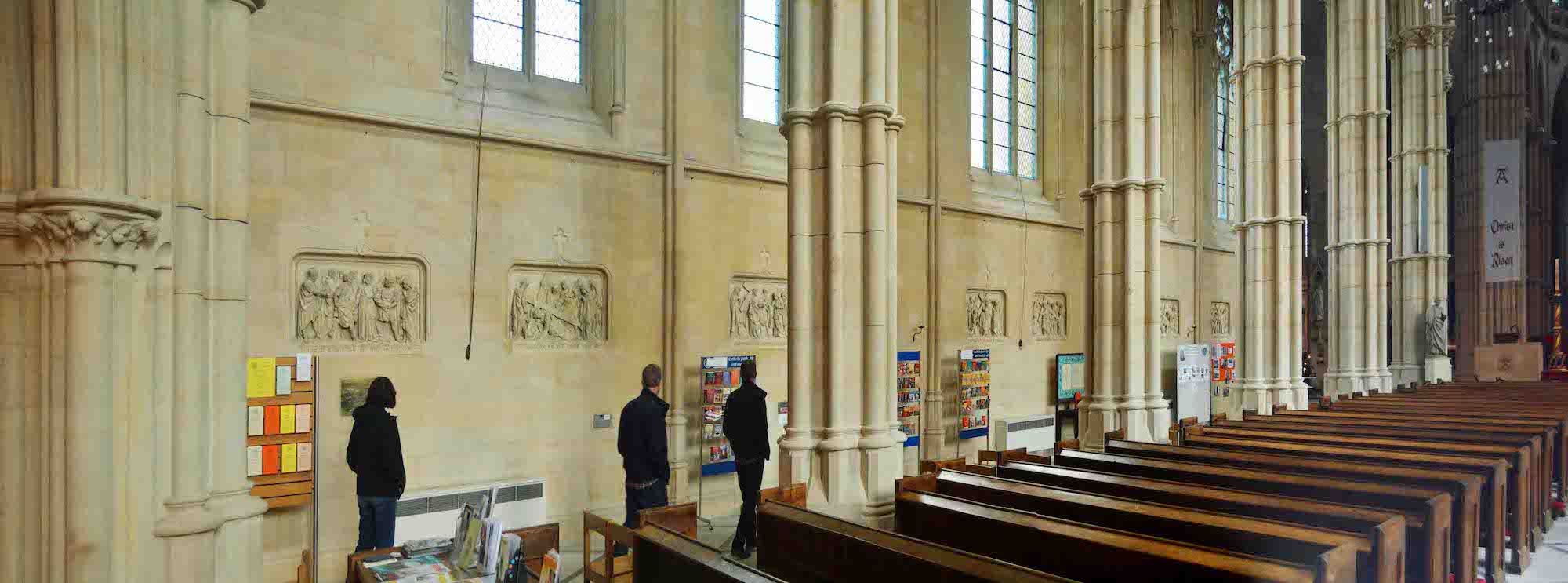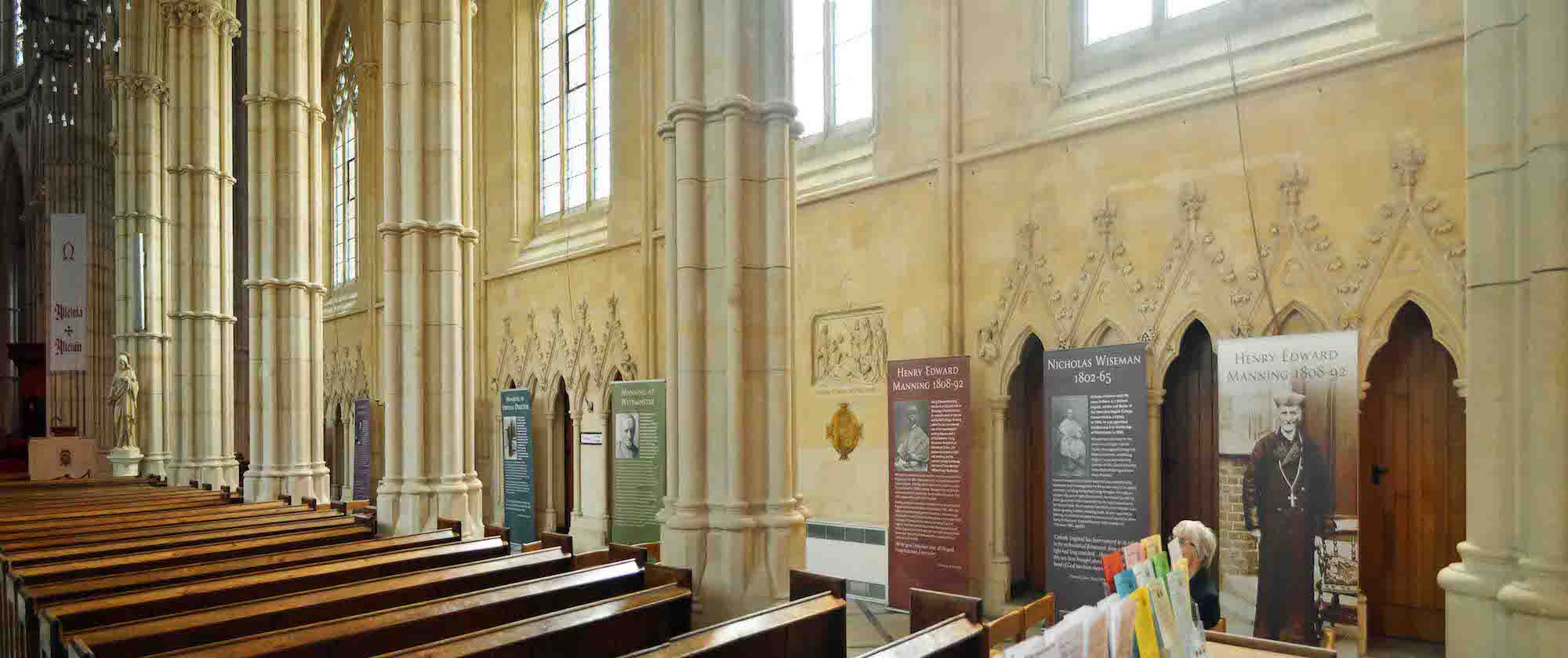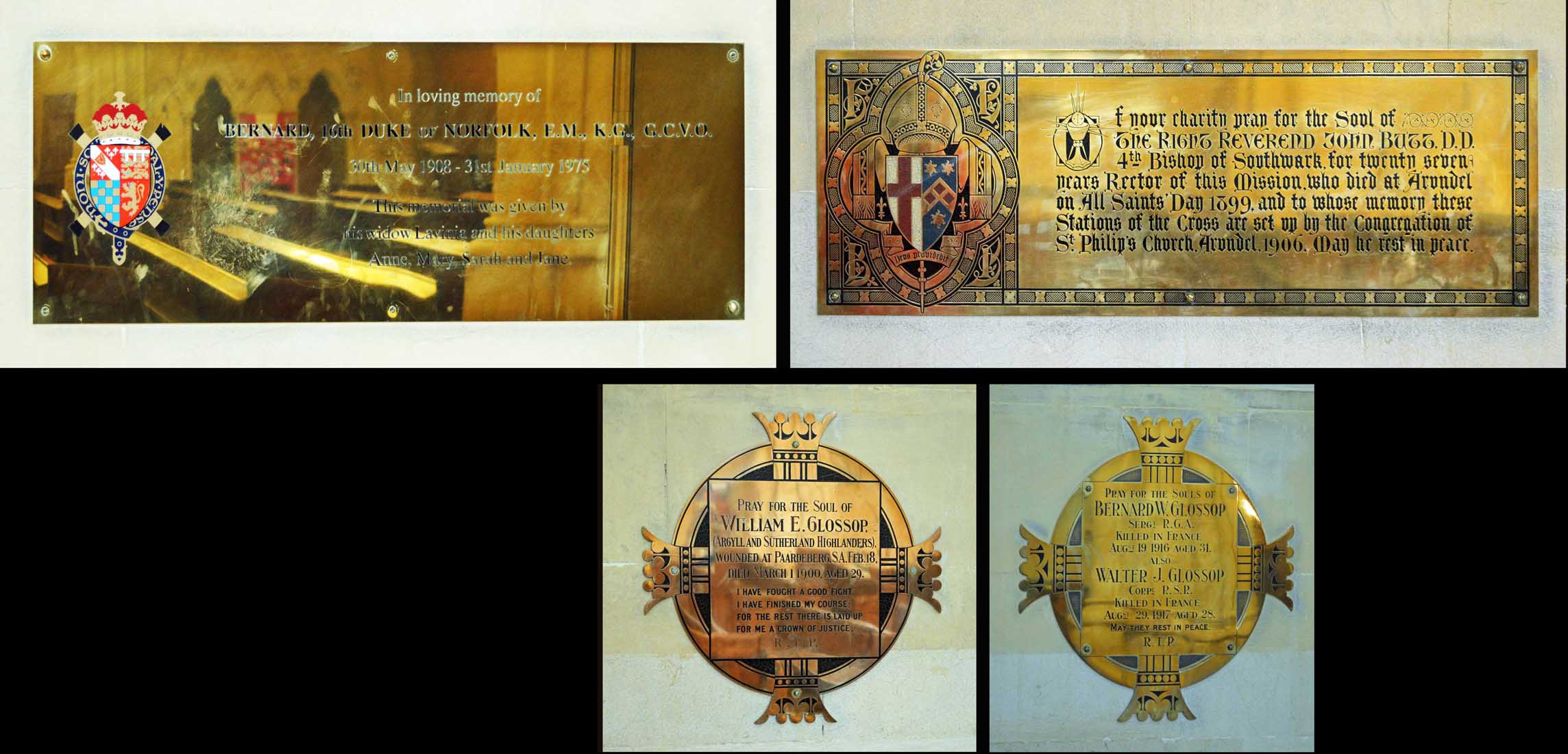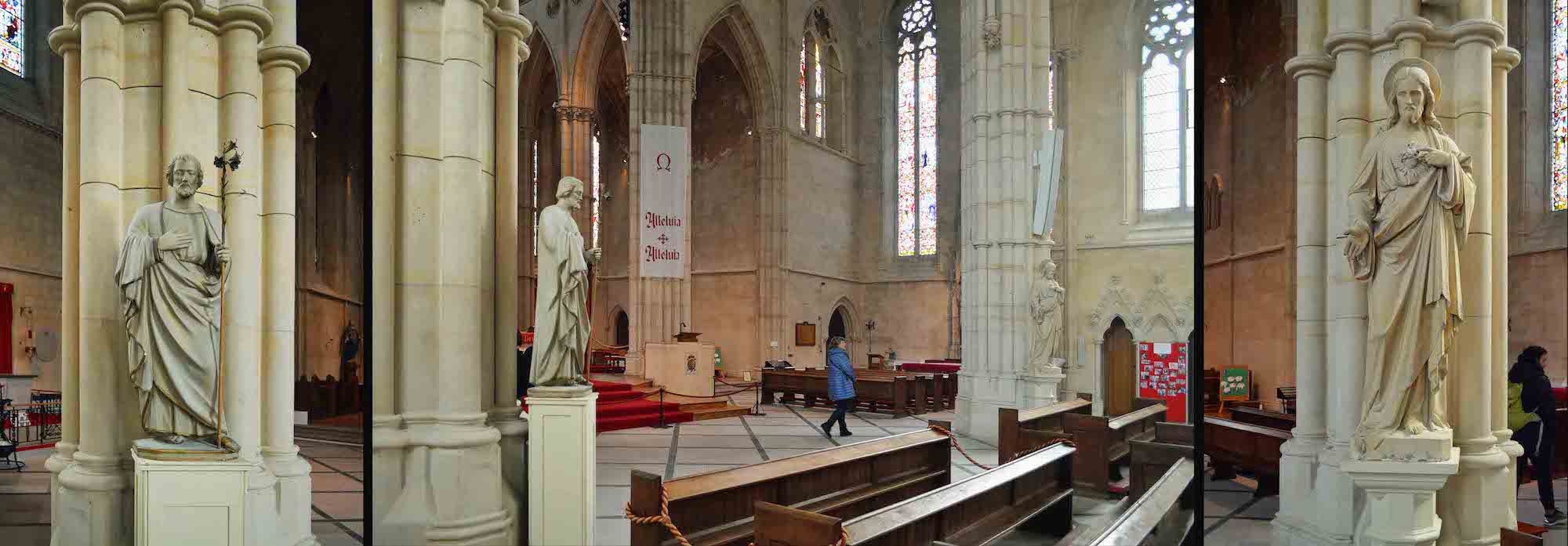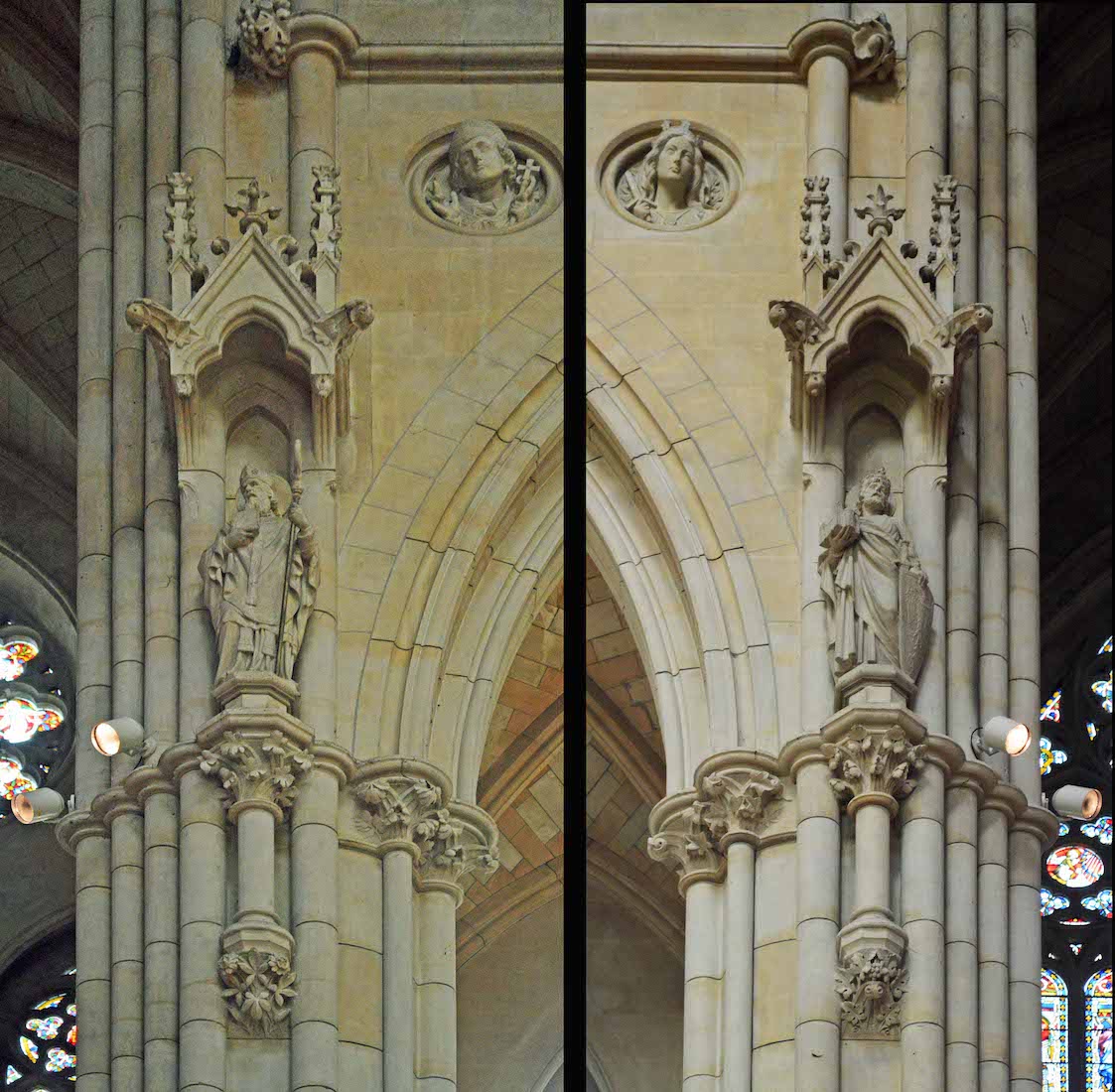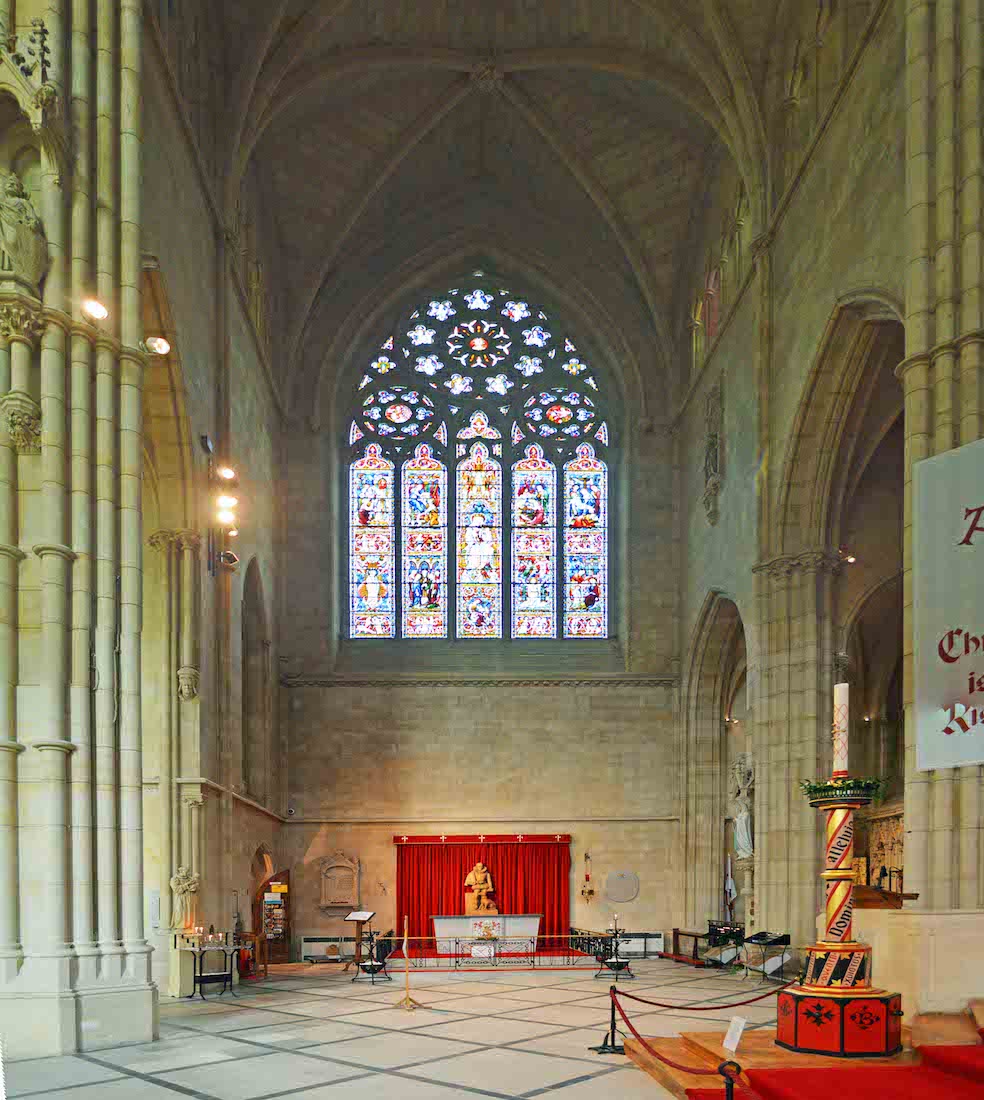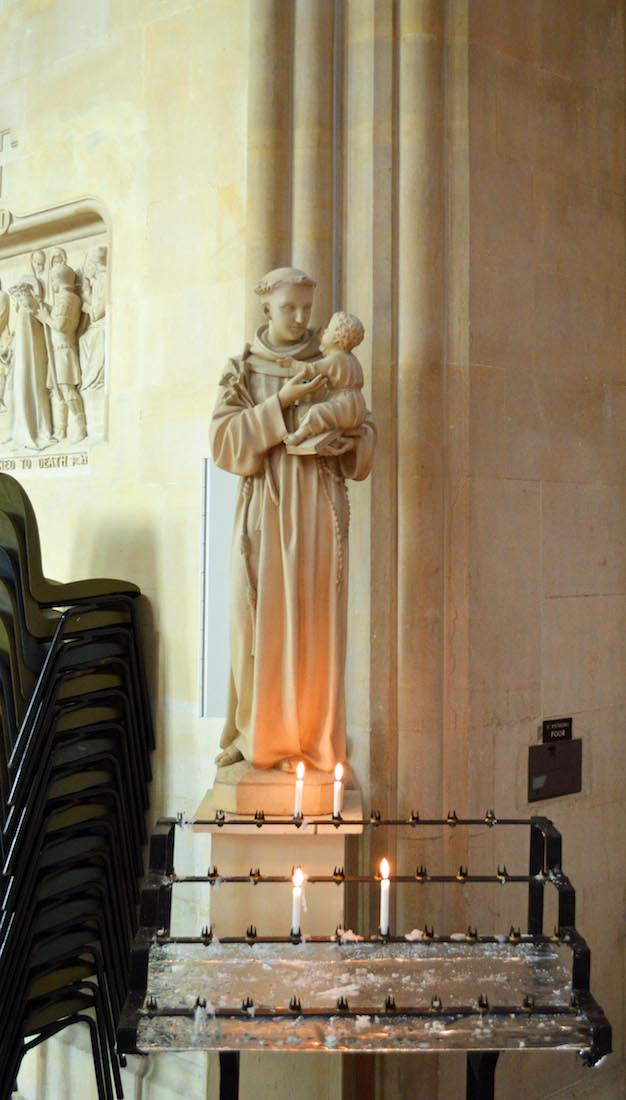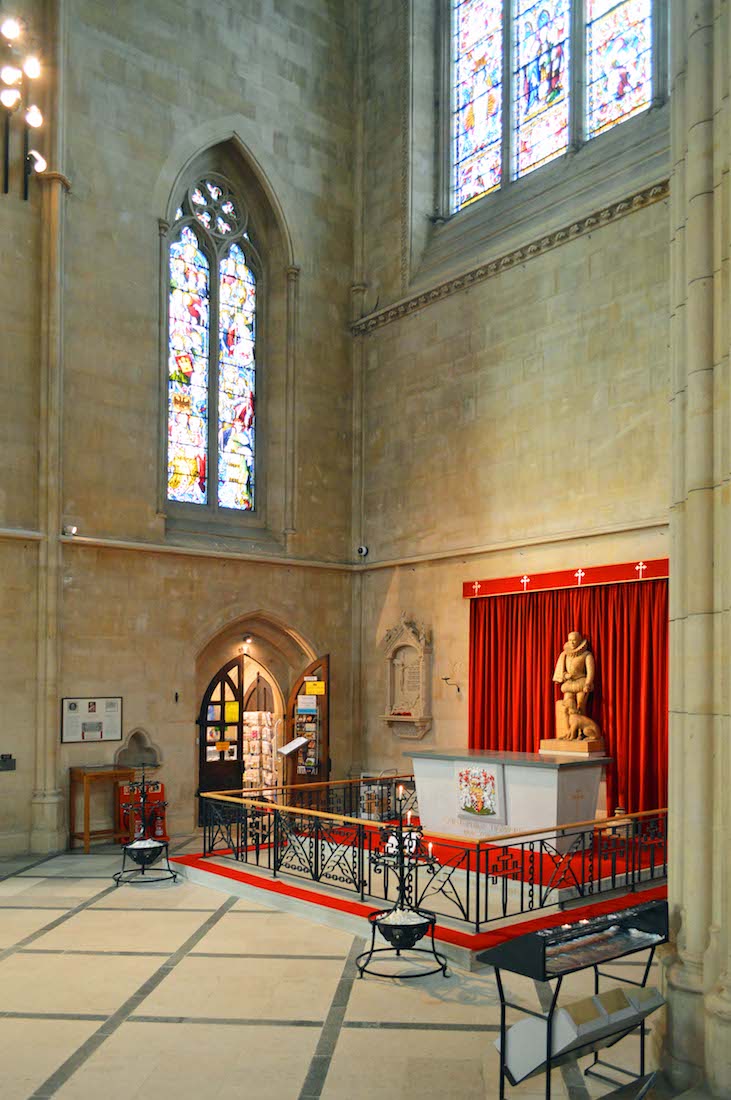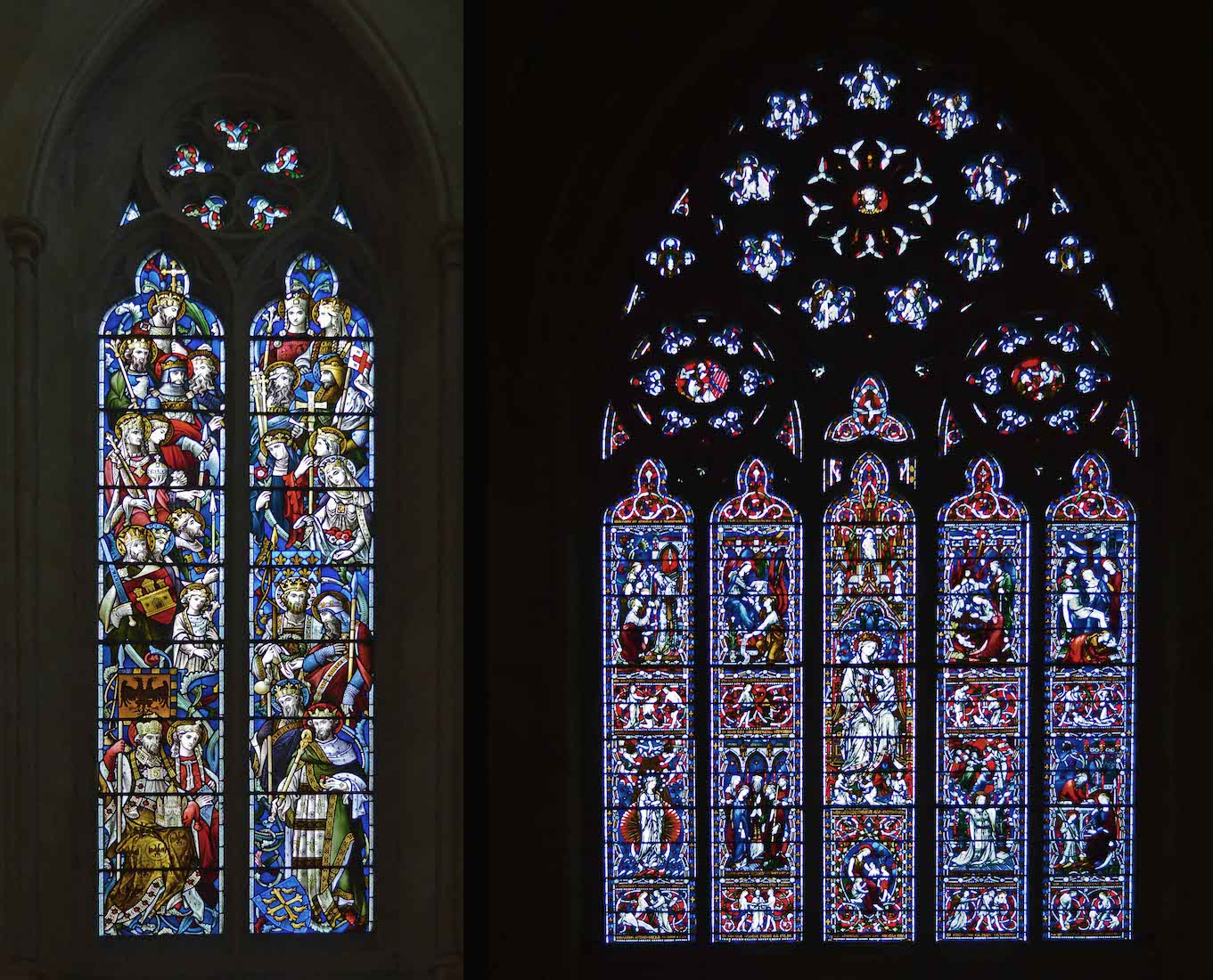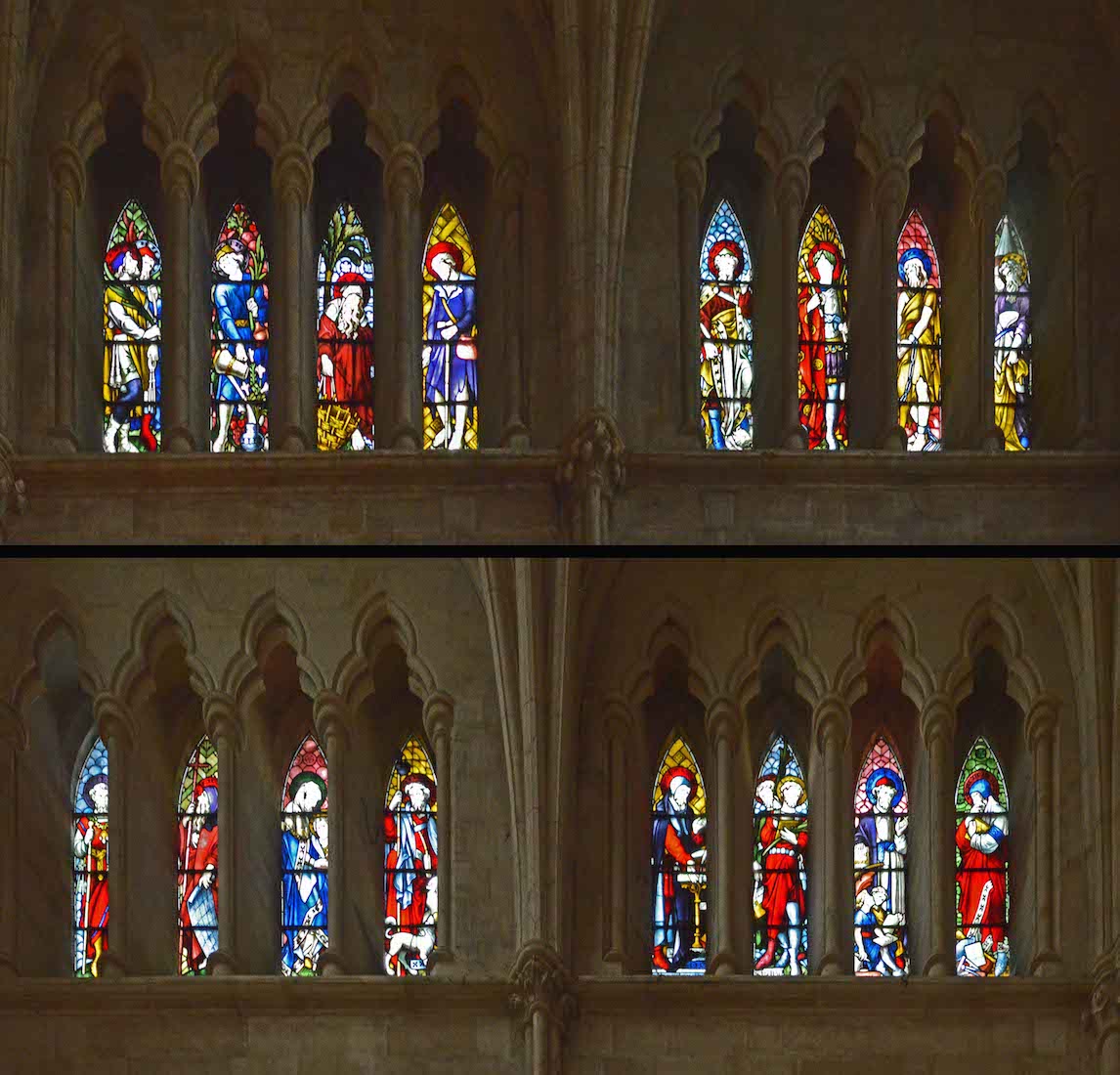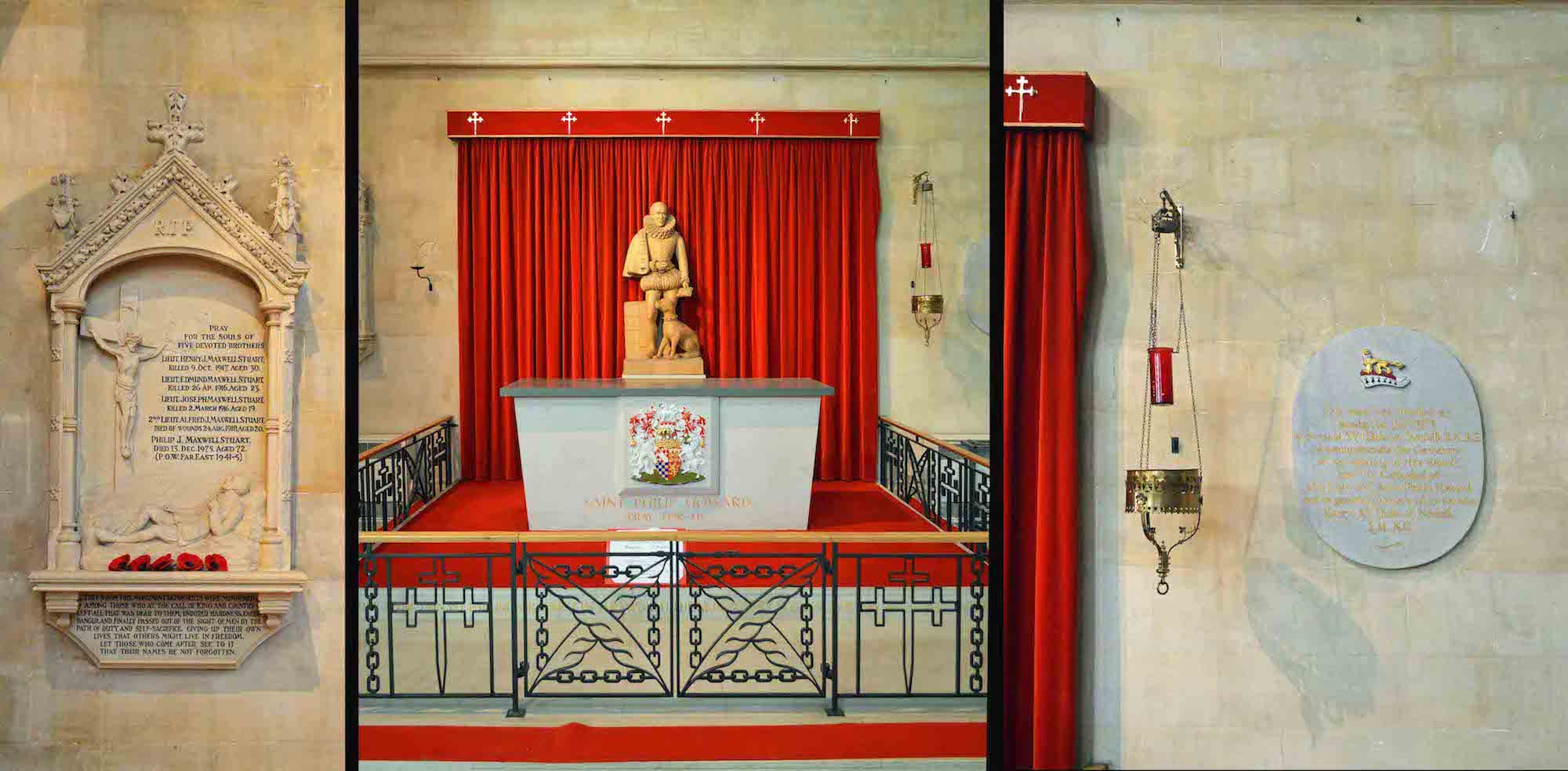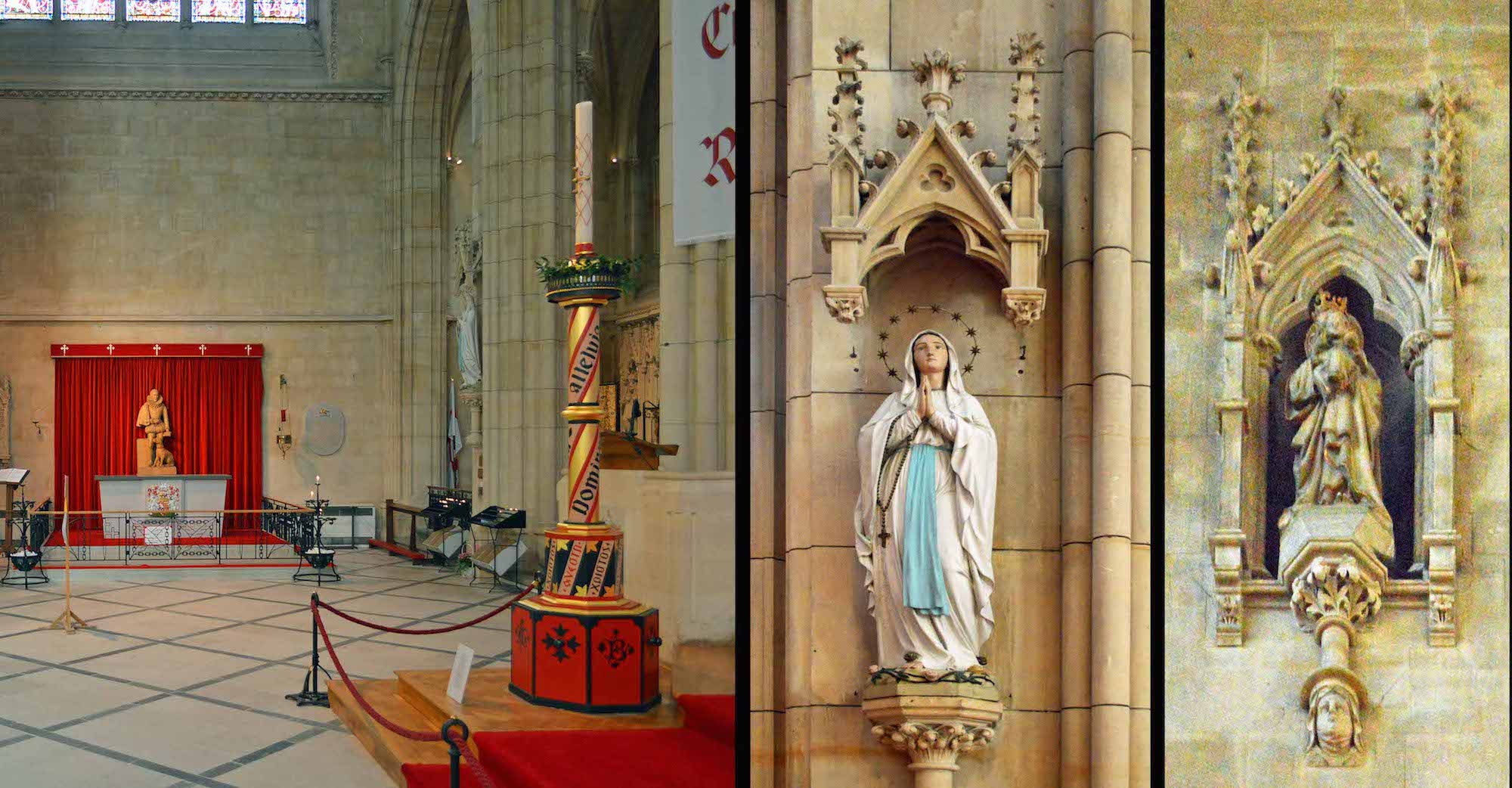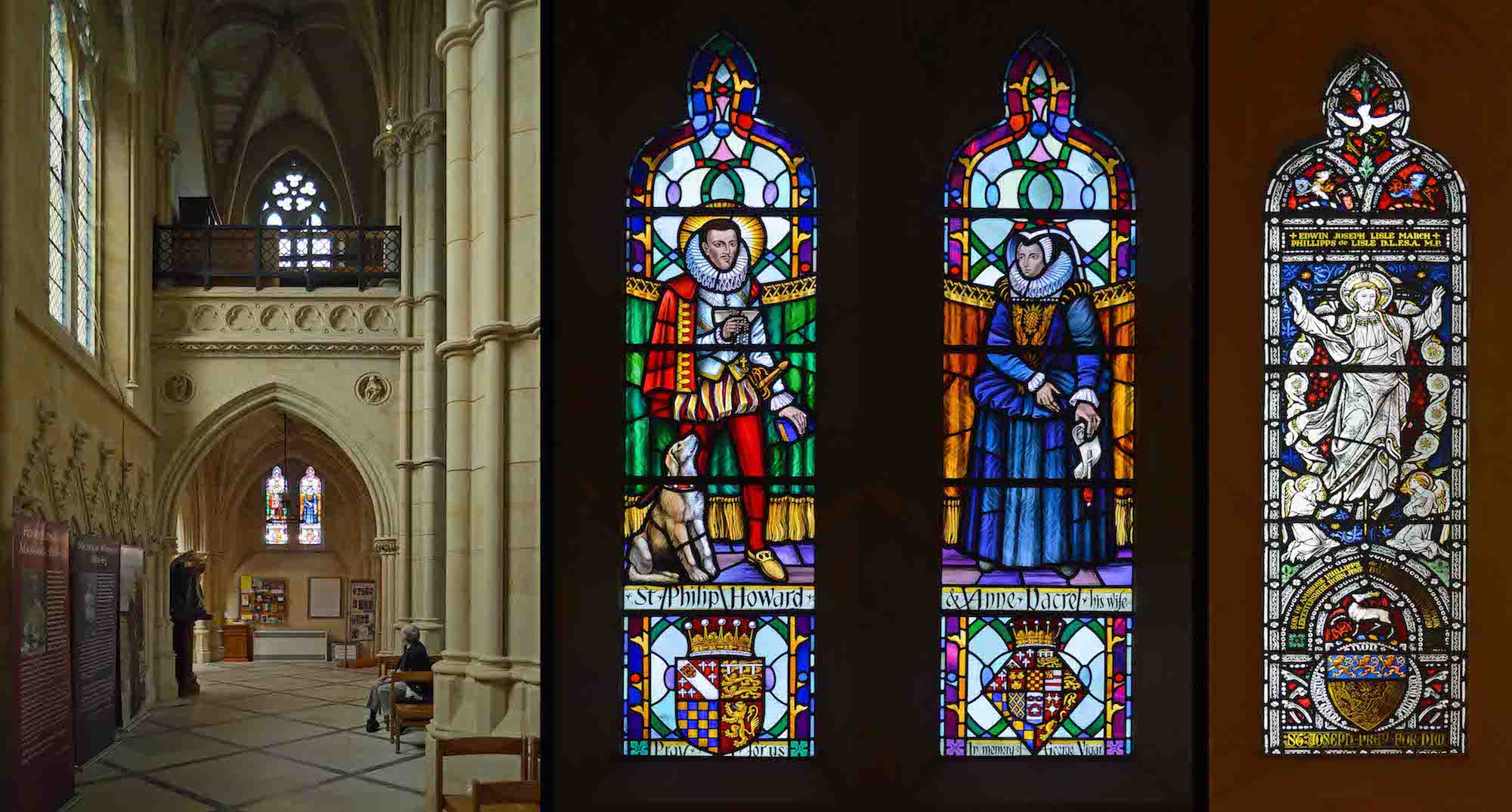
Looking West along the South nave aisle we see two of the three South narthex windows. The two windows at left show St Philip Howard and his wife Anne Dacre. We shall discover more about St Philip as we explore this Cathedral. The elaborate window at right showing the ascension of Christ, remembers Edwin Joseph March Phillipps de Lisle whose father Ambrose played a distinguished role in Catholic life in the 19th century. PLAN
22. NORTH NARTHEX
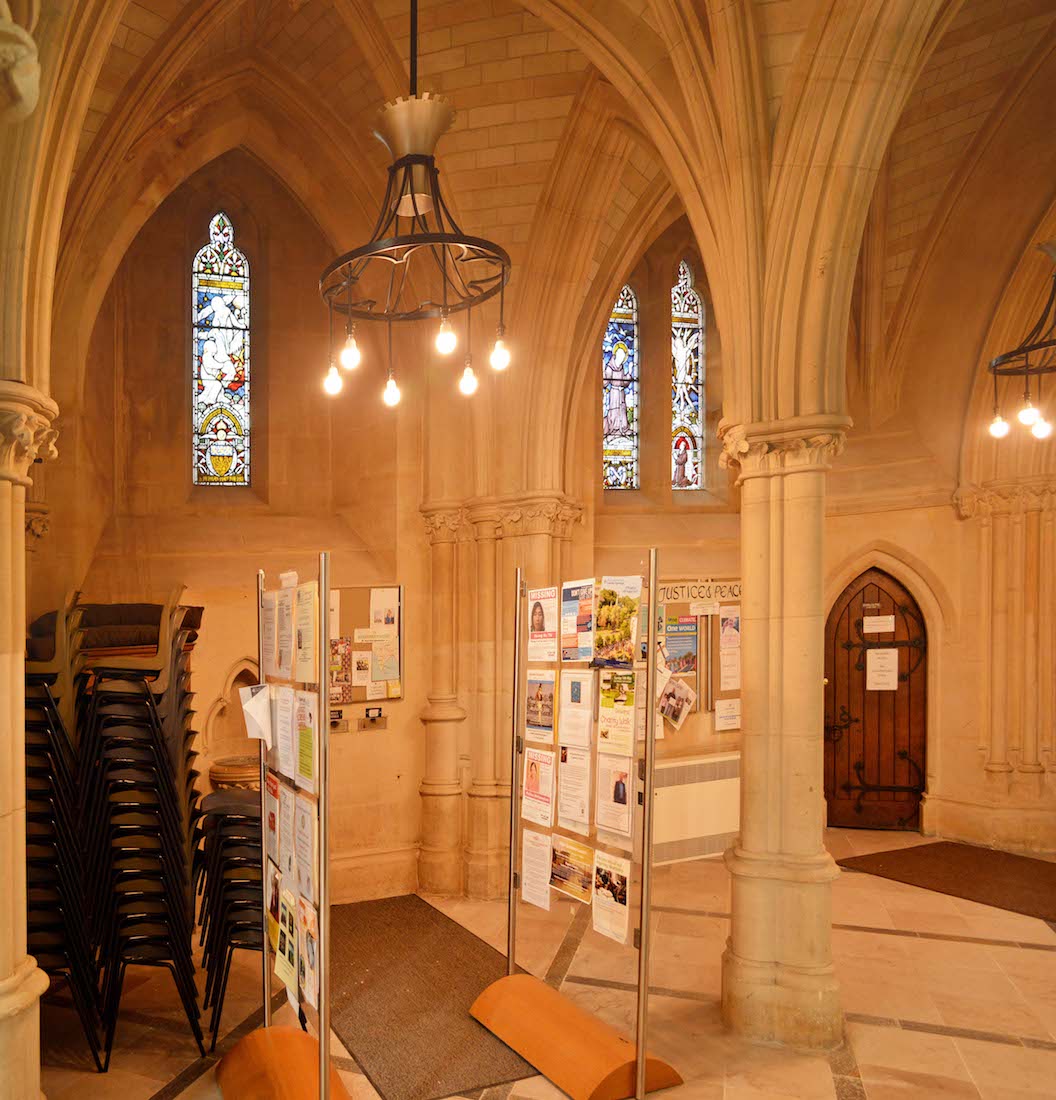
In the North narthex are three more stained glass windows, and one of those interesting closed doors! – this one leading up into the bell tower. Some more display boards, and a stack of chairs – cathedrals seldom have sufficient hidden storage space.
23. NORTH NARTHEX WINDOWS
The window at left remembers another member of the de Lisle family – Lt Alexander Charles Nicholas March de Lisle who was killed in action in 1917. The window shows Elijah departing in his chariot of fire. The two lights at right are in memory of Reginald Balfour, shown kneeling, in Franciscan habit. The subject is the stigmata of St Francis, who received the imprint of Christ’s wounds in his own body.
24. WEST WALL
Leaving the narthex, we walk down the centre nave aisle and look back. What a lovely sight! Below the rose window a handsome organ, built for St John’s Church, Islington, but installed at Arundel in 1875. Small roundels below the organ gallery represent angels making music. The two large roundels show St Cecilia, patroness for musicians, and Pope St Gregory who did much to foster plainsong. Named after him is ‘Gregorian Chant’. Through the arches the two inner narthex windows can be seen.
25. GREAT ROSE WINDOW
In the centre of the great rose window is the Blessed Virgin with the Holy Child. Around her is a ring of angels bearing incense. In the outer circle are the 15 Mysteries of the Rosary. These are meditations on episodes in the life and death of Jesus from the Annunciation to the Ascension and beyond, known as the Joyful Mysteries, the Sorrowful Mysteries, and the Glorious Mysteries. Each of these Mysteries contemplates five different stages of Christ’s life.
26. NAVE
The French Gothic style of architecture makes an immediate impression of height, light and space. The nave is 22 metres high, 10 metres wide with two 3 metre outer aisles. The nave has six bays and is 30 metres long. Each of the lofty columns has eight clustering shafts. There is no stained glass in the nave, ensuring plenty of light.
27. NAVE ROOF
The cross-groined vault is made up of chalk alternating with Bath stone. A row of carved bosses runs down the centre. we notice some of the busts of Saxon saints in the spandrels – the wall filling the space between the tops of the arches. There are men on the South side and women on the North.
28. NORTH NAVE
This is a view of the North nave wall. We observe the plain glass windows, and below a row of Stations of the Cross. Behind the figure at left we catch a glimpse of a brass plate – one of several memorials on the nave walls.
29. SOUTH NAVE
The South wall of the nave is dominated by three confessionals or reconciliation rooms. There is also the occasional Station of the Cross and memorial plaque.
30. STATIONS OF THE CROSS
On the nave walls are the 14 Stations of the Cross always to be found in a Catholic church. These depict incidents on Christ’s last journey, from his condemnation by Pontius Pilate to his crucifixion and laying to rest in the tomb. Pilgrims to Jerusalem in the Middle Ages followed this traditional route and brought this form of devotion home with them.
31. NAVE PLAQUES
These plaques are to be found on the nave walls. They are in memory of Bernard, the 16th Duke of Norfolk who died in 1975; the Right Reverend John Butt who died in 1899; and war casualties William, Bernard and Walter Glossop. Butt was Bishop of Southwark from 1885 to 1897, but previously served for 27 years in Arundel. The Arundel Stations of the Cross were erected in his memory.
32. CROSSING
The crossing is where the transepts meet the nave-sanctuary axis of the Cathedral. There is a statue on either side. At left is a statue of St Joseph, easily identified by the sprouting staff he carries – a reference to an old legend. At right is a statue of the Sacred Heart – Christ with a special emphasis on his love and compassion.
33. HIGH CROSSING FIGURES
High above the crossing stand two small figures – statues of St Henry, Emperor of the Romans, and St Edmond of Canterbury. These are the two saints after whom are named Duke Henry and his brother Lord Fitzalan of Derwent, from whose chapel the statues were originally brought after the hall had been flooded to form a reservoir.
34. NORTH TRANSEPT
A navigation view of the North transept! At centre is the large transept window, and below, an altar – in fact, with a statue of St Philip Howard. At left we see a statue and on the side wall, beyond, the shop entry, and above, a smaller window. There are various items of interest along the far wall. At right is a statue of the Virgin Mary, and another statue high up on the wall. On either side of Mary is a chapel entrance. And high up on either side can be seen light from clerestory windows.
35. ST ANTHONY AND THE CHRIST CHILD
There is a well known story of the elderly monk Anthony of Padua praying alone in his cell, and the Christ Child appearing before him. There are various versions of the legend, but St Anthony is often shown holding the Infant Jesus. Anthony was a fervent preacher of the Franciscan Order who died in 1231.
36. ANOTHER VIEW OF THE NORTH TRANSEPT
This angled view of the North transept shows better the shop entrance with the Western window above it.
37. NORTH TRANSEPT WINDOWS
The West window shown at left is the window of royal saints. The large window shows in its central light, Mary with her Divine Child, and below, Eve with her children. In each of the main lights are represented incidents in the Genesis account of Eve, ‘mother of all the living’, contrasted with events from the life of Mary, Mother of Christ and ‘Mother of the Church’. The top roundel shows Christ the Bridegroom surrounded by nine virgin saints – Catherine, Margaret, Hilda, Etheldreda, Germaine, Victoria, Agnes, Cecilia and Winefride.
38. NORTH TRANSEPT CLERESTORY WINDOWS
High above are two rows of clerestory windows, executed in loving detail, and almost out of sight! The amount of time and effort the cathedral builders put into details which are almost out of sight amazes me.
39. NORTH TRANSEPT, NORTH WALL
At left is a memorial to five devoted brothers, four of whom were killed in the First World War. At right is a 1973 memorial stone commemorating the centenary of the Cathedral. At centre is the shrine of St Philip Howard, who is shown with his dog. St Philip Howard, 1st Earl of Arundel (1557 – 1595) was an English nobleman who converted to Catholicism in 1581. He renounced his previous, frivolous life and was reconciled with his wife. He was canonised by Pope Paul VI in 1970, as one of the Forty Martyrs of England and Wales.
40. ENTRY TO THE NORTH CHAPELS
Two chapels lead off the North transept, their entries separated by the statue of Mary – Our Lady of Lourdes – to whom Duke Henry had a great devotion. To the left of this statue we find St Wilfrid’s Chapel, and to the right, the Lady Chapel. At right is shown a figure of a king, high up on the transept wall.


